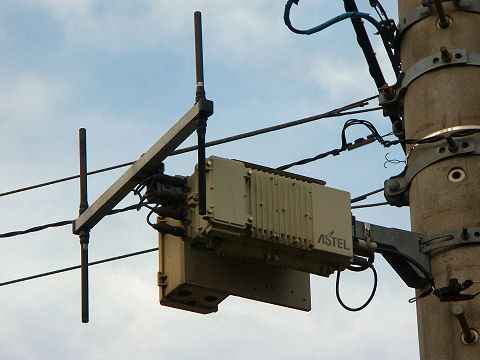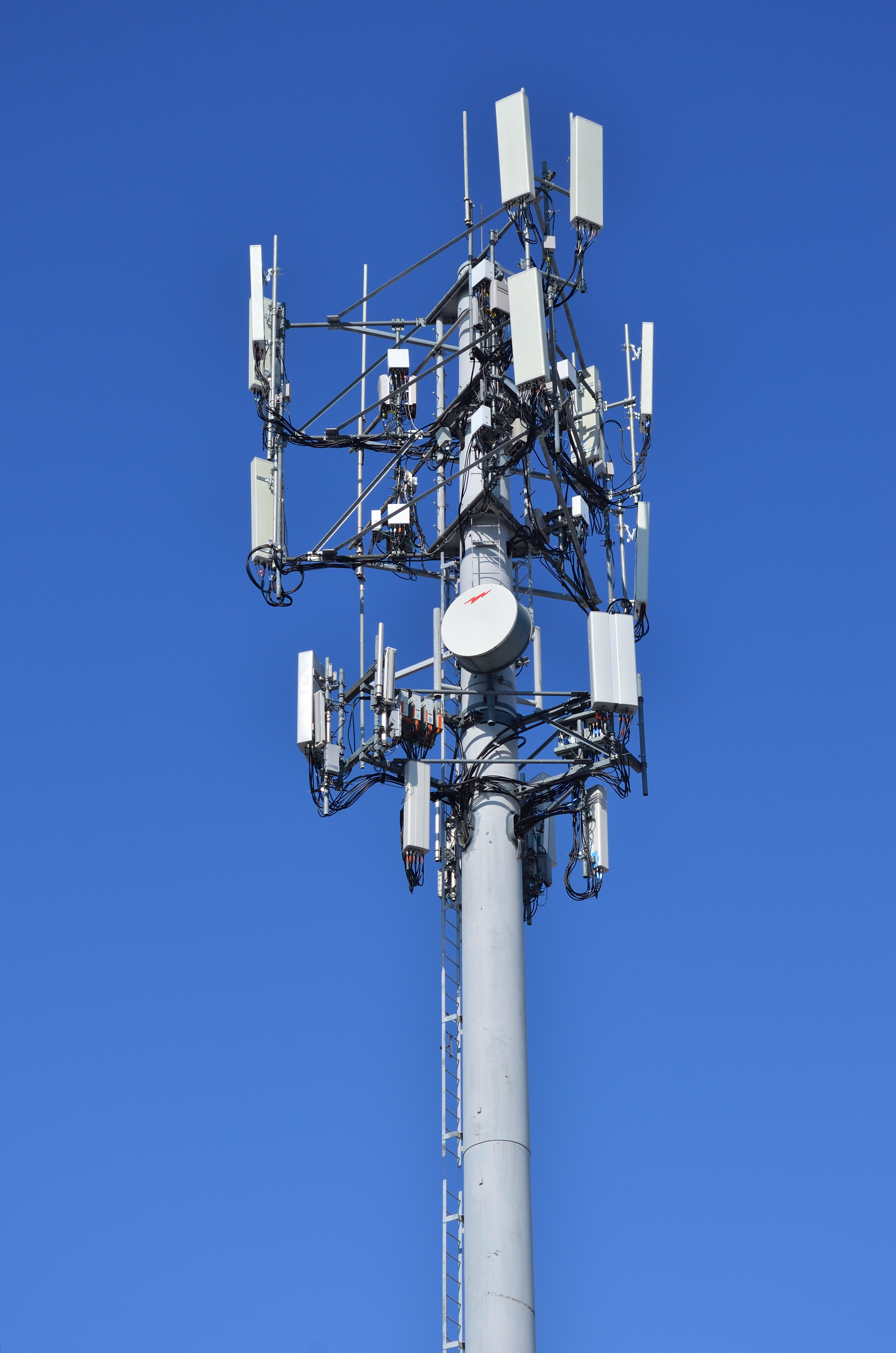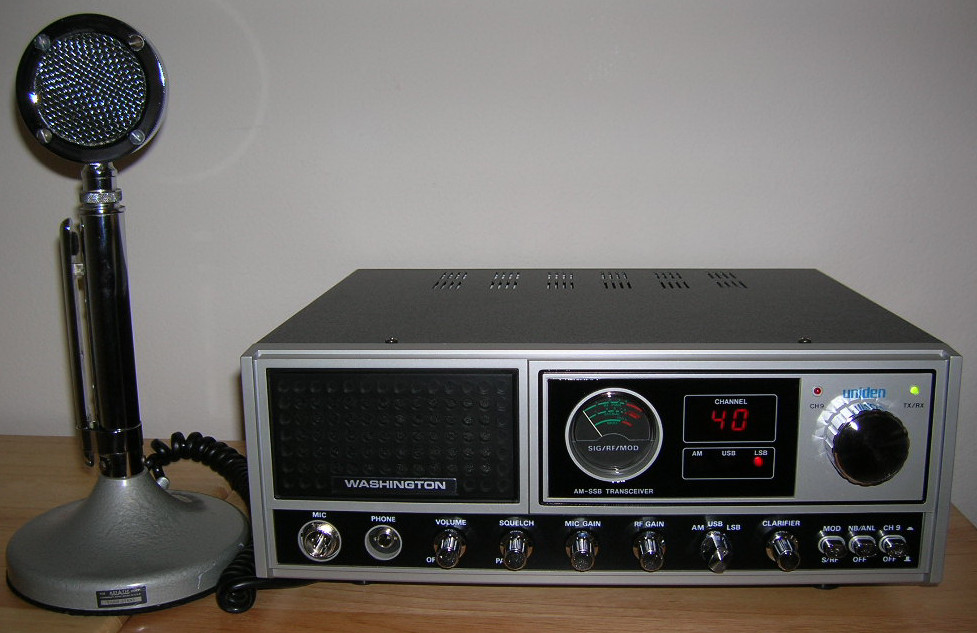|
Microcell
A microcell is a cell in a mobile phone network served by a low power cellular base station (tower), covering a limited area such as a mall, a hotel, or a transportation hub. A microcell is usually larger than a picocell, though the distinction is not always clear. A microcell uses power control to limit the radius of its coverage area. Typically the range of a microcell is less than two kilometers wide, whereas standard base stations may have ranges of up to 35 kilometres (22 mi). A picocell, on the other hand, is 200 meters or less, and a femtocell is on the order of 10 meters, although AT&T calls its femtocell that has a range of , a "microcell". AT&T uses "AT&T 3G MicroCell" as a trademark and not necessarily the "microcell" technology, however. A microcellular network is a radio network composed of microcells. Rationale Like picocells, microcells are usually used to add network capacity in areas with very dense phone usage, such as train stations. Microcells ar ... [...More Info...] [...Related Items...] OR: [Wikipedia] [Google] [Baidu] |
Picocell
A picocell is a small cellular base station typically covering a small area, such as in-building (offices, shopping malls, train stations, stock exchanges, etc.), or more recently in-aircraft. In cellular networks, picocells are typically used to extend coverage to indoor areas where outdoor signals do not reach well, or to add network capacity in areas with very dense phone usage, such as train stations or stadiums. Picocells provide coverage and capacity in areas difficult or expensive to reach using the more traditional macrocell approach. Overview In cellular wireless networks, such as GSM, the picocell base station is typically a low-cost, small (typically the size of a ream of A4 paper), reasonably simple unit that connects to a base station controller (BSC). Multiple picocell 'heads' connect to each BSC: the BSC performs radio resource management and hand-over functions, and aggregates data to be passed to the mobile switching centre (MSC) or the gateway GPRS support node ... [...More Info...] [...Related Items...] OR: [Wikipedia] [Google] [Baidu] |
Femtocell
In telecommunications, a femtocell is a small, low-power cellular base station, typically designed for use in a home or small business. A broader term which is more widespread in the industry is ''small cell'', with ''femtocell'' as a subset. It typically connects to the service provider's network via the Internet through a wired broadband link (such as digital subscriber line, DSL or cable television, cable); current designs typically support four to eight simultaneously active mobile phones in a residential setting depending on version number and femtocell hardware, and eight to sixteen mobile phones in enterprise settings. A femtocell allows service providers to extend service coverage indoors or at the cell edge, especially where access would otherwise be limited or unavailable. Although much attention is focused on W-CDMA, WCDMA, the concept is applicable to all standards, including GSM, CDMA2000, TD-SCDMA, WiMAX and LTE (telecommunication), LTE solutions. The use of femtoce ... [...More Info...] [...Related Items...] OR: [Wikipedia] [Google] [Baidu] |
Picocell
A picocell is a small cellular base station typically covering a small area, such as in-building (offices, shopping malls, train stations, stock exchanges, etc.), or more recently in-aircraft. In cellular networks, picocells are typically used to extend coverage to indoor areas where outdoor signals do not reach well, or to add network capacity in areas with very dense phone usage, such as train stations or stadiums. Picocells provide coverage and capacity in areas difficult or expensive to reach using the more traditional macrocell approach. Overview In cellular wireless networks, such as GSM, the picocell base station is typically a low-cost, small (typically the size of a ream of A4 paper), reasonably simple unit that connects to a base station controller (BSC). Multiple picocell 'heads' connect to each BSC: the BSC performs radio resource management and hand-over functions, and aggregates data to be passed to the mobile switching centre (MSC) or the gateway GPRS support node ... [...More Info...] [...Related Items...] OR: [Wikipedia] [Google] [Baidu] |
Personal Handyphone System
The Personal Handy-phone System (PHS), also known as the Personal Communication Telephone (PCT) in Thailand, and the Personal Access System (PAS) and commercially branded as ''Xiaolingtong'' () in China, was a mobile network system operating in the 1880–1930 MHz frequency band. In Japan, it was introduced as a low-cost wireless service with smaller coverage areas than standard cellular networks. Its affordability made it popular in China, Taiwan, and other parts of Asia, as both the handsets and network infrastructure were relatively inexpensive to maintain. Developed in the 1990s, PHS used a microcell architecture with low-power base stations covering . unlike conventional cellular networks that relied on large cell sites for extensive coverage, PHS’s design was better suited for dense urban environments and reduced infrastructure costs. PHS was overtaken in the marketplace by GSM (3G) and UMTS (4G), with the last retail network decommissioned in 2021 and the last commerci ... [...More Info...] [...Related Items...] OR: [Wikipedia] [Google] [Baidu] |
GSM Interworking Profile (DECT)
{{short description, DECT profile The GSM Interworking Profile, usually abbreviated to GIP and sometimes to IWP, is a profile for DECT that allows a DECT base station to form part of a GSM network, given suitable handsets. While proposed and tested, notably in Switzerland in 1995, the system has never been commercially deployed. Infrastructure issues make it less practical and useful to implement than the more recent Generic Access Network, GAN/UMA system, which can make use of usually unmetered and neutral Internet service to provide the connection back to the network operator. Description Like the later Generic Access Network, GAN/UMA standard, GIP makes use of a technology that doesn't require licensed spectrum to expand capacity and allow end users, in theory, to improve coverage in areas difficult to reach via large, external, cell towers. GIP is a DECT ''profile'', meaning a set of protocols that runs over the base DECT system. The most popular profile for DECT is GAP, which ... [...More Info...] [...Related Items...] OR: [Wikipedia] [Google] [Baidu] |
Mobile Phone Network
A cellular network or mobile network is a telecommunications network where the link to and from end nodes is wireless and the network is distributed over land areas called ''cells'', each served by at least one fixed-location transceiver (such as a base station). These base stations provide the cell with the network coverage which can be used for transmission of voice, data, and other types of content via radio waves. Each cell's coverage area is determined by factors such as the power of the transceiver, the terrain, and the frequency band being used. A cell typically uses a different set of frequencies from neighboring cells, to avoid interference and provide guaranteed service quality within each cell. When joined together, these cells provide radio coverage over a wide geographic area. This enables numerous devices, including mobile phones, tablets, laptops equipped with mobile broadband modems, and wearable devices such as smartwatches, to communicate with each other a ... [...More Info...] [...Related Items...] OR: [Wikipedia] [Google] [Baidu] |
Mobile Phone
A mobile phone or cell phone is a portable telephone that allows users to make and receive calls over a radio frequency link while moving within a designated telephone service area, unlike fixed-location phones ( landline phones). This radio frequency link connects to the switching systems of a mobile phone operator, providing access to the public switched telephone network (PSTN). Modern mobile telephony relies on a cellular network architecture, which is why mobile phones are often referred to as 'cell phones' in North America. Beyond traditional voice communication, digital mobile phones have evolved to support a wide range of additional services. These include text messaging, multimedia messaging, email, and internet access (via LTE, 5G NR or Wi-Fi), as well as short-range wireless technologies like Bluetooth, infrared, and ultra-wideband (UWB). Mobile phones also support a variety of multimedia capabilities, such as digital photography, video recordin ... [...More Info...] [...Related Items...] OR: [Wikipedia] [Google] [Baidu] |
Base Station
Base station (or base radio station, BS) is – according to the International Telecommunication Union's (ITU) Radio Regulations (RR) – a " land station in the land mobile service." A base station is called '' node B'' in 3G, '' eNB'' in LTE ( 4G), and '' gNB'' in 5G. The term is used in the context of mobile telephony, wireless computer networking and other wireless communications and in land surveying. In surveying, it is a GPS receiver at a known position, while in wireless communications it is a transceiver connecting a number of other devices to one another and/or to a wider area. In mobile telephony, it provides the connection between mobile phones and the wider telephone network. In a computer network, it is a transceiver acting as a switch for computers in the network, possibly connecting them to a/another local area network and/or the Internet. In traditional wireless communications, it can refer to the hub of a dispatch fleet such as a taxi or delivery fl ... [...More Info...] [...Related Items...] OR: [Wikipedia] [Google] [Baidu] |
Network Capacity
Capacity management's goal is to ensure that information technology resources are sufficient to meet upcoming business requirements cost-effectively. One common interpretation of capacity management is described in the ITIL framework. ITIL version 3 views capacity management as comprising three sub-processes: business capacity management, service capacity management, and component capacity management. As the usage of IT services change and functionality evolves, the amount of central processing units (CPUs), memory and storage to a physical or virtual server etc. also changes. If there are spikes in, for example, processing power at a particular time of the day, it proposes analyzing what is happening at that time and making changes to maximize the existing IT infrastructure; for example, tuning the application, or moving a batch cycle to a quieter period. This capacity planning identifies any potential capacity related issues likely to arise, and justifies any necessary invest ... [...More Info...] [...Related Items...] OR: [Wikipedia] [Google] [Baidu] |
DECT
Digital Enhanced Cordless Telecommunications (DECT) is a cordless telephony standard maintained by ETSI. It originated in Europe, where it is the common standard, replacing earlier standards, such as CT1 and CT2. Since the DECT-2020 standard onwards, it also includes IoT communication. Beyond Europe, it has been adopted by Australia and most countries in Asia and South America. North American adoption was delayed by United States radio-frequency regulations. This forced development of a variation of DECT called DECT 6.0, using a slightly different frequency range, which makes these units incompatible with systems intended for use in other areas, even from the same manufacturer. DECT has almost completely replaced other standards in most countries where it is used, with the exception of North America. DECT was originally intended for fast roaming between networked base stations, and the first DECT product was Net3 wireless LAN. However, its most popular application is s ... [...More Info...] [...Related Items...] OR: [Wikipedia] [Google] [Baidu] |
Small Cells
{{disambiguation ...
Small means of insignificant size. Small may also refer to: Science and technology * SMALL, an ALGOL-like programming language * ''Small'' (journal), a nano-science publication * <small>, an HTML element that defines smaller text Arts and entertainment Fictional characters * Small, in the British children's show Big & Small Other uses * Small (surname) * List of people known as the Small * "Small", a song from the album ''The Cosmos Rocks'' by Queen + Paul Rodgers See also * Smal (other) * Smalls (other) Smalls may refer to: * Smalls (surname) * Camp Robert Smalls, a United States Naval training facility * Fort Robert Smalls, a Civil War redoubt * Smalls Creek, a northern tributary of the Parramatta River * Smalls Falls, a waterfall in Maine, USA ... [...More Info...] [...Related Items...] OR: [Wikipedia] [Google] [Baidu] |





